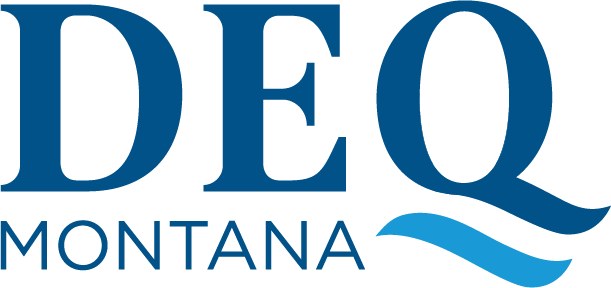Program Overview
The Water Quality Planning Bureau is responsible for administering four vital functions related to the Clean Water Act.
Visit the Clean Water Act Information Center on the Resources page to find information about the quality of Montana's rivers, streams, and lakes in relation to Montana's water quality assessments. These assessments are based on available statewide water monitoring data and information. The Clean Water Act Information Center also provides access to Montana's Water Quality Reports and List of Impaired Surface Waters, as well as online search and mapping tools.
The Water Quality Planning Projects page provides information on projects in an active or recently completed phase of, or some combination of, the following: water quality standards development, monitoring and assessment, or total maximum daily load development.
Water Quality Planning Bureau Dashboard Clean Water Act Information Center
Water Quality Planning Contacts
Bureau Chief
Andrew Ulven (406) 444-2680
Submit Data
DEQ provides detailed guidance to organizations, individuals, and laboratories on how to submit ambient water quality data to DEQ. Montana uses a system called the Montana EquIS Water Quality Exchange (MT-eWQX) to store water quality monitoring data, including physical, chemical, biological and habitat data, from locations across the state. Once verified, these data are submitted to EPA's Water Quality Portal, where they are publicly available.
The steps below are provided to help organizations and volunteers submit their data through DEQ's data portal.
Step 1: Prepare Your EDD
Data must be submitted to MT-eWQX in a specific electronic format known as an Electronic Data Deliverable (EDD). Data providers are required to download the MT-eWQX EDD and populate it with the project data to be submitted. Detailed guidance for populating the MT-eWQX EDD can be found in the MT-eWQX Guidance Manual.
MT-eWQX EDD MT-eWQX Guidance Manual
Appendices:
Step 2: Validate Your EDD
After the MT-eWQX EDD is populated, all data must be validated using the EQuIS Data Processor (EDP). The EDP is a standalone application that allows data providers to check their EDD files prior to submission to ensure they are formatted correctly. The EDD must have a clean validation from the EDP prior to data submission to DEQ. Refer to the EDP Guidance Manual for detailed instructions.
EDP Guidance Manual Download EDP
Step 3: Submit Your EDD
In order to submit an EDD, the following are required:
- Completed MT-eWQX Data Submittal Form
- Final MT-eWQX EDD
- Associated project QAPP and/or SAPs and any other attached documents referenced in the EDD
Information about all the above requirements can be found within the MT-eWQX Guidance Manual.
If you need assistance during the EDD submittal process, contact Deanna Tarum or Jolene McQuillan.
Additional Information
The following field forms are provided by DEQ to assist with project data management:
- Site Visit Form
- Lake Site Visit Form
- Groundwater Site Visit Form
- River Site Visit Form
- Data Logger Form
- National WQX Organizations
- WQX Data Upload - Tutorial Videos
Subscribe for Important Updates
Receive important updates about MT-eWQX, including when updated reference value lists are posted, anticipated outages for maintenance, or training opportunities.
Subscribe: MT-eWQX ListServInformation for Laboratories
This link is provided to assist laboratories in producing a MT-eWQX compatible EDD. The requirements provided in this document are specific for laboratories and should not be used by data providers submitting data to DEQ.
NOTE: Labs are required to report both the Method Detection Limit (MDL) and Lower Reporting Limit (LRL) for each result. The MDL value as defined by EPA (40 CFR Appendix B to Part 136) is required. The LRL shall be the value the lab defines as the lower limit of quantitation.
The following templates are provided by DEQ to assist labs in producing a MT-eWQX compatible EDD:
- Blank MT-eWQX EDD Template
- MT-eWQX EDD with Example Chemistry Data
- MT-eWQX EDD with Example Biology Data
Need Help?
If you need assistance during the EDD submittal process, contact Deanna Tarum.
